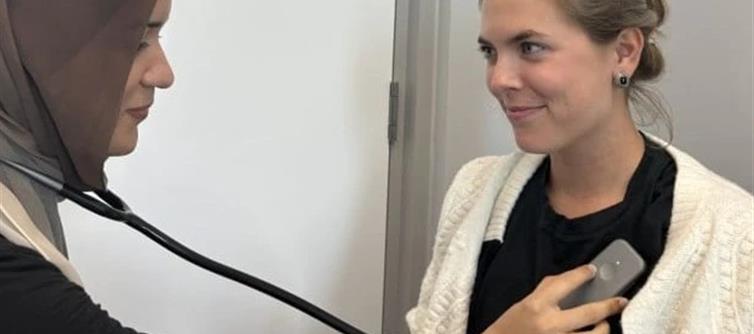
For over 200 years, the humble stethoscope has been the symbol of doctors everywhere — a simple tool for listening to the body’s hidden rhythms. But what if this old companion just got smarter than the human ear?
That’s exactly what’s happening in the UK, where researchers have unveiled an AI-powered stethoscope that can detect three deadly heart problems in just 15 seconds. What looks like an ordinary device could quietly revolutionize the way heart disease is diagnosed — and even save thousands of lives.
Here are the 7 suspense-filled breakthroughs behind this futuristic tool:
1. From 1816 to AI — The Evolution Nobody Saw Coming
The stethoscope, first invented in 1816, has always been about sound. But this new device doesn’t just “listen” — it records sound and electrical signals (like an ECG), combining them for a deeper view into the heart.
2. Three Killers, One Device
In just 15 seconds, the AI stethoscope can flag:
Heart failure – when the heart can’t pump enough blood
Atrial fibrillation – irregular, silent rhythms that raise stroke risk
Valvular heart disease – faulty heart valves that strain the system
3. Smarter Than the Human Ear
Where a doctor’s ear may miss subtle clues, the AI is trained on tens of thousands of patients’ data. It recognizes patterns invisible to humans — spotting danger before symptoms even appear.
4. Results in Your Pocket
Instead of scribbled notes, results are sent straight to a smartphone app. Patients and doctors can see instant red-flag warnings, bringing diagnoses from hospital labs to the clinic desk.
5. The Numbers That Shocked Researchers
In a massive study of 12,000 patients, the AI device proved game-changing:
heart failure was 2.3x more likely to be caught.
Silent atrial fibrillation was 3.5x more likely to be detected.
Valve disease was nearly twice as likely to be spotted early.
6. From Hospitals to Your local Clinic
This isn’t just for specialists in big cities. The plan is to roll out AI stethoscopes in GP practices across Wales, South London, and Sussex — making lifesaving early detection available to everyday patients.
7. A Quiet Revolution in Medicine
The British heart Foundation calls this a potential life-saver for thousands. For something that looks as ordinary as a stethoscope, it carries the power of a mini-supercomputer, silently hunting hidden threats before they strike.
⚠️ Final Word
The world’s deadliest killer, heart disease, has finally met its match in a tool smaller than a deck of cards. The next time your doctor places a stethoscope on your chest, don’t be surprised if it’s not just listening — but thinking.




 click and follow Indiaherald WhatsApp channel
click and follow Indiaherald WhatsApp channel